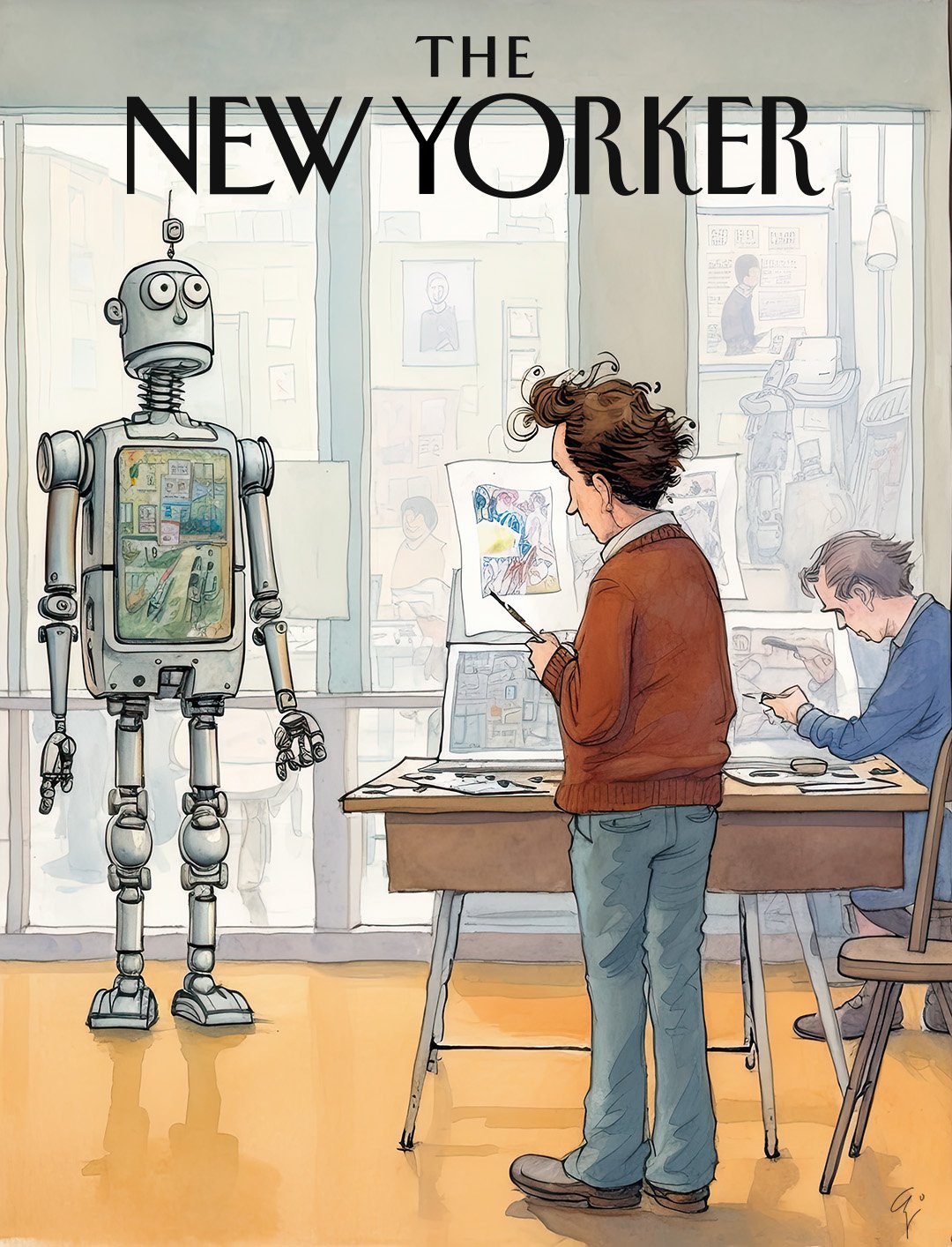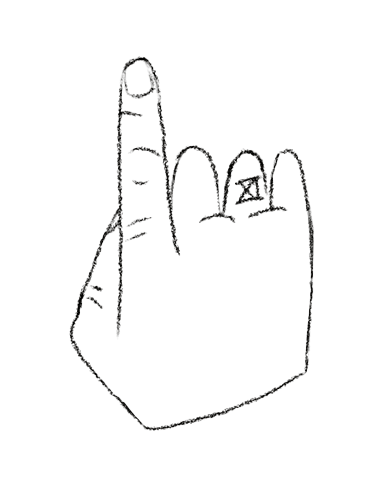In the 1960s, Madison Avenue ran the show in advertising. Creative leaders had a knack for capturing the pulse of American culture (and smoke-filled rooms). The scene’s shifted. Smoking’s out, designers are going hybrid, and AI is here, bringing a new kind of intelligence to how we design, market, and connect. It’s a creative partner that sifts through data, spots patterns, and feeds fresh insights into the mix. With AI, there’s room to explore concepts that weren’t possible before. It is changing how we think, design, communicate, and create.
Before diving in, let’s keep one thing clear: no matter how advanced AI gets, it can’t replace the human touch. AI can replicate techniques, but it can’t create meaning; true artistry comes from understanding, not just output.
As creative leaders, our strength lies in shaping visuals that resonate on an emotional level. We read between the lines, find the subtle cues, and create campaigns that speak directly to people. AI can enhance this process, but it’s still just a tool—something to integrate, not surrender to.
The question today is: how do AI models—like LLMs and computer vision—fit into this landscape? Can they enhance an industry driven by quick instincts, nuanced creativity, and genuine connections?
AI’s Role in Data Analysis and Creative Generation
AI in marketing is shifting towards real-time, predictive, and personalized strategies. Current advancements let creative leaders react instantly to changing consumer behavior, with tools that refine campaigns mid-flight based on live data. The move to first-party data means brands can create more authentic, privacy-compliant insights, building deeper connections with their audience. Instead of broad assumptions, AI is enabling precise, dynamic responses—adjusting creative content, ad placements, and messaging in sync with emerging trends.
Generating Design Content (a dream morgue for a creative)
AI’s ability to generate content and simulate creative processes is groundbreaking. I spent 20 years as the sole caregiver for my mother, so we dedicated a lot of time to escaping through creativity. When I was young, she was a commercial artist, before Multiple Sclerosis forced her to leave the world of TV news (she was an awesome artist for NBC). MS shifted her focus entirely to painting with a brush and canvas during her years confined to a wheelchair. Eventually, she even resorted to painting with a brush in her mouth when she was confined to her bed. We spent hours browsing the web or looking through newspapers and magazines for anything that we could cut up and add to her morgue. Inspiration is everything for an artist and designer. After all, we are essentially just copies of copies, copying.
Now, with AI algorithms, like CNN (Convolutional Neural Network), RNN (Recurrent Neural Network), and Generative Adversarial Networks (GANs), we can create a variety of design elements to fill up that morgue (albeit not that great at the moment), from layouts to packaging designs, even style frames for a commercial, based on the parameters that a creative leader would provide their team. I wish my mother was alive to see the world we live in. AI would’ve been her dream morgue creator. Using AI to help sketch out design ideas not only saves time but also serves as a creative springboard, propelling creative leaders towards fresh and novel ideas.
Testing and Iterating Campaigns
AI has revolutionized testing and iterating campaigns. Instead of relying on focus groups or waiting for a campaign to hit the market to gather feedback, AI can simulate consumer response to different creative assets, suggesting tweaks and adjustments before the campaign even hits the market. This predictive modeling could potentially save companies millions of dollars while helping creative leaders create more impactful campaigns.
I’m currently in the process of creating an AI design doc that can create a campaign, buyer personas, and simulated consumer responses based on past news and Twitter responses to similar campaigns. It will then tweak and refine the campaign to grab more of the market demographic. Just remarkable!
Real World Example:
I was curious if my Docker setup of my AI model could generate buyer personas for our beloved skincare product line, Ursa Major. We’re Vermonters and we love supporting our Vermont businesses. I’ve become pretty adept at prompt engineering and was able to create a design doc that tasked it with creating buyer personas for Ursa Major.
Despite needing some calibration and adjustment, the process was swift. It’s worth noting that I don’t have any access to Ursa Major’s sales data or specific customer information. At one point, my model even started creating Python code to automate buyer questionnaires, but I intervened before it could extend its reach to social media platforms like Twitter or Facebook.
Here’s what it came up with…
Ursa Major Audience Research:
Ursa Major skincare’s target audience is primarily made up of women between the ages of 25 and 45 who are interested in natural and organic skincare products. They are health-conscious and environmentally aware, and they value products that are free from harmful chemicals and toxins. They are also interested in products that are effective and easy to use, and they are willing to pay a premium for high-quality products.
Their pain points include concerns about aging, dryness, and sensitivity, and they are looking for products that can address these issues. They are motivated by the desire to look and feel their best, and they are interested in products that can help them achieve this goal. They prefer to communicate through social media and email, and they are likely to research products online before making a purchase.
Ursa Major Buyer Persona Profiles:
Segment 1:
Demographics: Women, 25–35
Job Titles: Health and wellness professionals, stay-at-home moms, students
Challenges: Busy schedules, lack of time for self-care
Goals: To look and feel their best, to maintain healthy and glowing skin
Preferred Communication Channels: Instagram, email
Segment 2:
Demographics: Women, 35–45
Job Titles: Health and wellness professionals, working moms, entrepreneurs
Challenges: Busy schedules, stress, aging
Goals: To look and feel their best, to maintain healthy and youthful-looking skin
Preferred Communication Channels: Instagram, email
Segment 3:
Demographics: Men, 25–35
Job Titles: Health and wellness professionals, athletes, students
Challenges: Busy schedules, lack of time for self-care
Goals: To maintain healthy and clear skin, to prevent signs of aging
Preferred Communication Channels: Instagram, email
Segment 4:
Demographics: Men, 35–45
Job Titles: Health and wellness professionals, entrepreneurs, athletes
Challenges: Busy schedules, stress, aging
Goals: To maintain healthy and youthful-looking skin, to prevent signs of aging
Preferred Communication Channels: Instagram, email
Segment 5:
Demographics: Women and men, 45–55
Job Titles: Retirees, empty nesters, health and wellness professionals
Challenges: Aging, dryness, sensitivity
Goals: To maintain healthy and youthful-looking skin, to prevent signs of aging
Preferred Communication Channels: Email, Facebook
Ursa Major Buyer Persona Insights:
Insight 1:
Common themes and patterns among all segments include concerns about aging, dryness, and sensitivity. Ursa Major Skincare should focus on developing products that address these issues and highlight the natural and organic ingredients used in their products.
Insight 2:
Segment 1 and 2 are primarily made up of women who are health-conscious and environmentally aware. Ursa Major Skincare should emphasize the natural and organic ingredients used in their products and highlight their commitment to sustainability.
Insight 3:
Segment 3 and 4 are primarily made up of men who are interested in natural and organic skincare products. Ursa Major Skincare should focus on developing products that are effective and easy to use and highlight the natural and organic ingredients used in their products.
Insight 4:
Segment 5 is primarily made up of retirees and empty nesters who are interested in natural and organic skincare products. Ursa Major Skincare should focus on developing products that address concerns about aging and highlight the natural and organic ingredients used in their products.
Recommendations:
Recommendation 1:
Ursa Major Skincare should consider partnering with influencers and bloggers who share their values and can help promote their products to their target audience.
Recommendation 2:
Ursa Major Skincare should consider using social media platforms such as Instagram and Facebook to reach their target audience and showcase their products.
Recommendation 3:
Ursa Major Skincare should consider offering promotions and discounts to encourage customers to try their products and build brand loyalty.
While slightly elementary, with a large dataset, this task could become quite powerful. It’s evident that a company can harness their comprehensive expertise to delegate tasks to a model like this, effectively creating an entire support team capable of handling the grunt work. This frees the creative leaders to focus on their primary strength—crafting emotionally resonant and captivating designs.
Personalization
AI is also playing a major role in personalization. The traditional one-size-fits-all approach is outdated. Today, AI helps develop multiple versions of a campaign, each tailored to a specific market segment, making communication more meaningful.
The Role of the Human
AI doesn’t diminish the role of the creative leader. Instead, it enhances it. Those who understand how to harness AI models become indispensable. The irreplaceable human aspects of creativity—the spark of a new idea, the emotional intuition, the understanding of cultural nuance—remain firmly in the hands of creative professionals. AI isn’t the sole director. It is, however, a new, powerful assistant.
In essence, the director/creative of the future is not merely an artist, designer, or a strategist, but a hybrid figure, part human, part AI, delivering emotionally resonant work, informed and enhanced by the analytical prowess of AI. And in this BRAVE NEW WORLD, brands that embrace the symbiotic relationship between AI and art direction will lead the pack.
A New Chapter
The rise of AI in the world of art direction and marketing is not the death knell of human creativity — far from it. It is the beginning of a new, exciting chapter in marketing and advertising, where art and tech work together to build more relevant and compelling brands and strategies.
AI will never...
Convey the mental state or emotional turmoil that led to “Starry Night.
Capture the raw emotion of a song like Johnny Cash’s “Hurt” or the storytelling of Bob Dylan
Replicate the depth in Nina Simone’s “Strange Fruit.” The haunting sense of injustice comes from a place no algorithm can reach.
Draw from the well of resilience in Maya Angelou’s “I Know Why the Caged Bird Sings.” It lacks the lived pain and triumph behind the words.
Channel the vulnerability of Frida Kahlo’s self-portraits. Mimicking her style is possible, but accessing the suffering that defined her art is not.
Improvise with the emotional depth and spontaneity Robin Williams brought to “Good Will Hunting.” Genuine, empathetic connection doesn’t come from a script.

